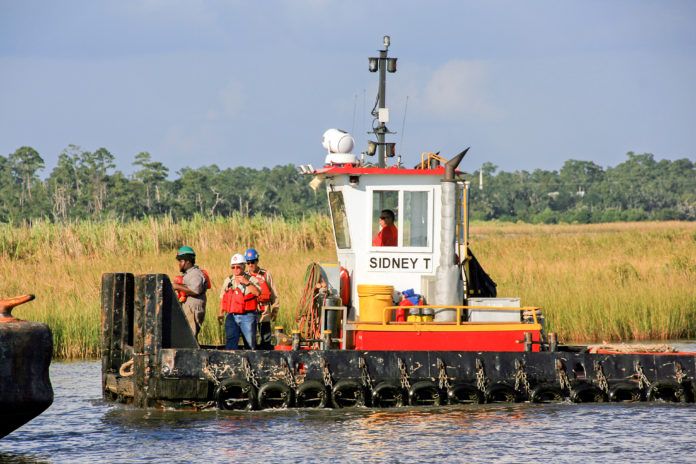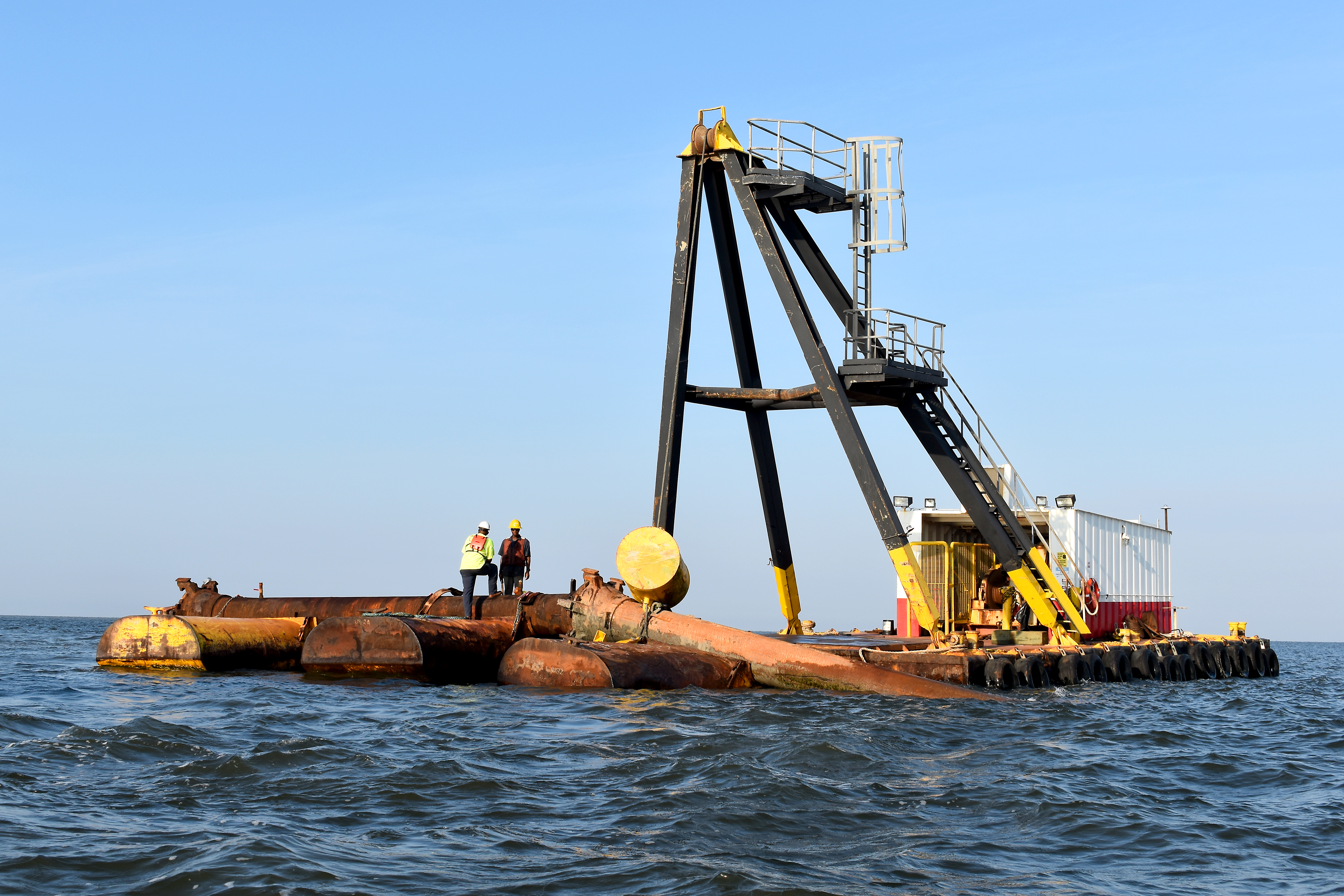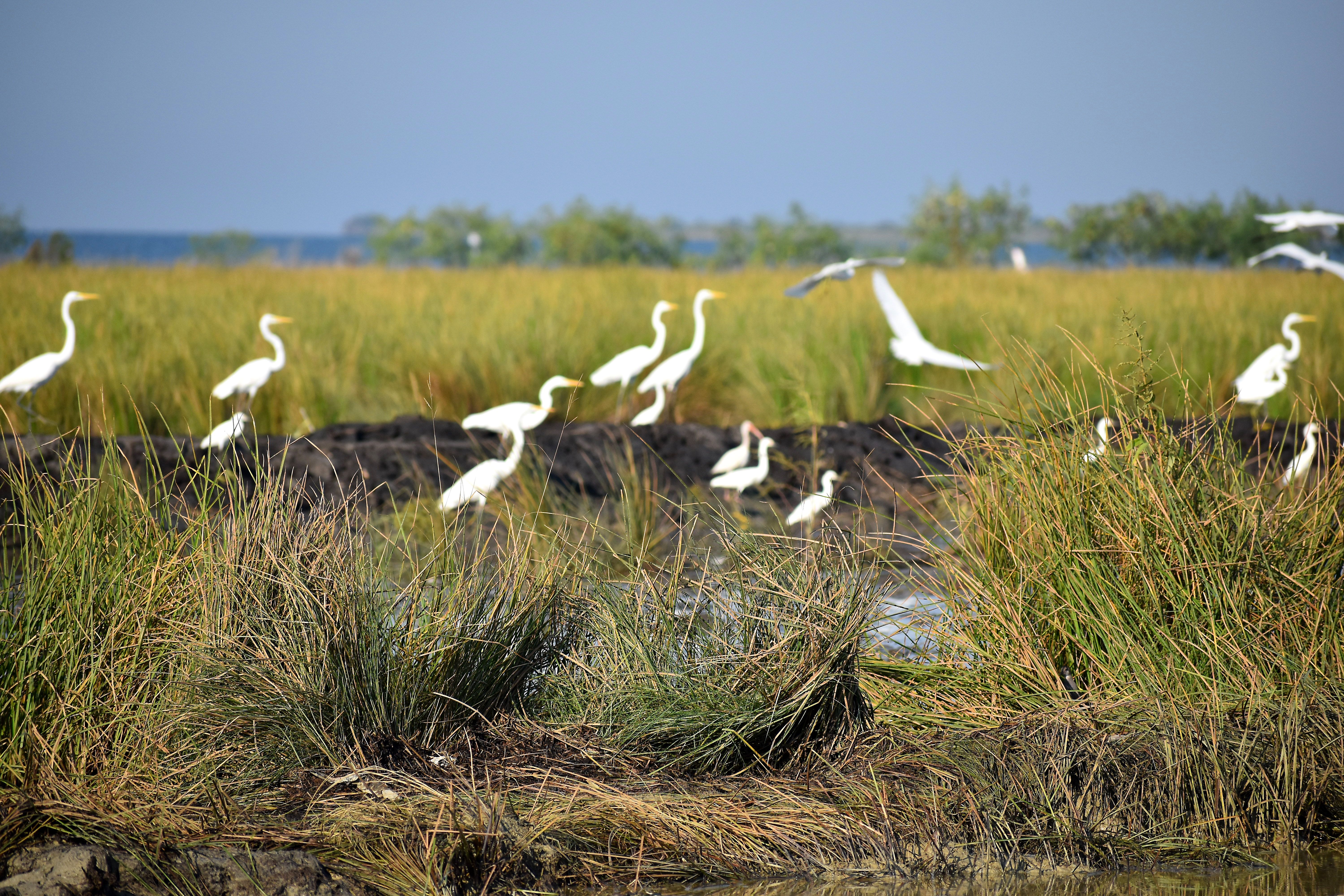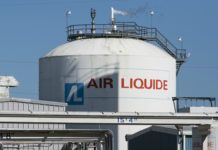
A proliferation of coastal restoration projects and LNG facilities has reinvigorated Weeks Marine Inc.’s decades-long presence along the Gulf Coast. Its strategically placed equipment yards and offices, firmly entrenched in the Louisiana marketplace, are perfectly poised to handle the load.
The maritime contractor is certainly not a new kid on the block. Founded by Francis H. and Richard B. Weeks in 1919 as the Weeks Stevedoring Co., the company began operations with two floating cranes in the Port of New York, handling bunker coal and dry ballast. Today, the company’s offices are scattered across several states, but situated predominantly in Louisiana and Texas, where two of its divisions—dredging and construction—do business out of Covington, Bourg, Houma and Houston.
As of late, Weeks Marine’s prosperity has been fueled increasingly by the Louisiana Coastal Protection and Restoration Authority and the burgeoning LNG market, which each promise to provide the company with a long-term revenue stream.
The profusion of work in these two sectors has also helped buoy the workforce from the state’s struggling oil and gas market by providing new job opportunities for out-of-work craftsmen. Chris Bordelon, Week’s facility manager in Houma, says some of his workers came directly from the oil and gas sector. To ease in the transition, the workers received on- and off-site specialized training in collaboration with educational facilities in the area.
STILL HIRING

Additional hiring by Weeks is likely to continue, as its Dredging Division remains in growth mode—principally through the addition of new dredges to accommodate future demand. In mid-July, the company announced that it would build a new, $60 million, 310-foot-long dredge to directly support an increase in coastal restoration projects.
The JS Chatry, named for Senior Vice President J. Stephen Chatry, is under construction at C&C Marine and Repair in Belle Chasse and is the sixth new dredge the company has ordered since 2011. Elsewhere, Weeks expects to christen a $110 million, 8,500-cubic-yard hopper dredge, the Magdalen, by year’s end in New York. “While the national coastal restoration and protection market is growing, we are especially optimistic about the market here in Louisiana,” said Weeks President Richard Weeks in a press release at the time the Chatry project was announced.
The manager of the JS Chatry project, Shane Harris, says its impacts are far reaching. “Parts are being fabricated in Alabama, Europe and in Belle Chasse, and we’re bringing it all together here,” Harris says. “Even though the majority of what’s happening is in Belle Chasse, there will be plenty of people from the Houma facility that will take part in the process, including the management and supervision side of it.”
Weeks’ Houma repair facility employs an average of 100 craftsmen and serves as a major maintenance hub for the company’s dredges and other machinery used for marsh restoration, retention dikes and flotation canals. Much of the regional dredging operation oversight is performed in Weeks’ Covington office.
“We (the Houma yard) do mostly repairs, as well as scheduled maintenance and planned maintenance,” Bordelon says. The facility operates multiple slips, thereby enabling it to handle repairs simultaneously. “We also have a support shop here, which is where we do fabrication, repairs, welding, etc.”
GROWTH FUELED BY PUBLIC MONEY
Weeks’ workload accelerated significantly in the aftermath of Hurricane Katrina, and then again following the BP oil spill in 2010, when the respective natural and manmade disasters delivered a tsunami of federal and state money for coastal restoration projects. It all began in 2005, when the Louisiana Legislature restructured the state’s Wetland Conservation and Restoration Authority to form the CPRA.
Then, following the BP oil spill, Louisiana Gov. Bobby Jindal authorized the construction of barrier islands to protect the coastline. The passage of the Gulf of Mexico Energy Security Act in 2006 promises to funnel additional money to the oil-producing states of Alabama, Louisiana, Mississippi and Texas for the purpose of coastal restoration projects, with the money coming from new offshore oil production.
Mark Sickles, Weeks’ director of corporate and government relations and a former executive director of the Dredging Contractors of America, says Weeks has the expertise, equipment and logistical ability to handle the work. “We think we’re the best at it,” he adds. “It’s our people, our experience in the physical environment and knowledge of the sediment quality challenges inherent to Louisiana.”
Unfortunately, he fears the federal money could be in jeopardy. A Trump budget proposal might limit or eliminate the GOMESA funding, which would have a significant impact on the continuation of the coastal restoration work, as well as on Weeks’ bottom line. “That’s a big deal,” he adds. “That’s a source of revenue that we’re counting on, and the Weeks family is investing in equipment to accommodate that.”
BUILDING FOR THE LNG WORLD
Weeks Marine’s Construction Division is equally excited about the potential of the LNG market, as the dozens of planned projects across the Gulf Coast states of Texas and Louisiana will eventually require marine terminals. Overseen from its Houston office, the Construction Division builds docks, wharves, piers, bridges, subaqueous pipelines and other waterfront structures for both private and governmental clients.
While much of the company’s industrial-related marine work in recent years has been to support the LNG industry with dock facilities and dredging services, similar services have been necessary to support LPG, ethane, crude oil, gasoline, diesel, distillates, coal and coke.
In Quintana, Texas, Weeks is constructing a new shipping berth to accommodate cargo transfer facilities for the new $12.5 billion Freeport LNG development. The initial three liquefaction trains of the Freeport liquefaction project are currently under construction, and they are scheduled to commence operations between Q4 2018 and Q3 2019.
Closer to home, Weeks has worked in an engineering-procurement-construction capacity to build marine facilities and perform dredging, as part of a $60 million contract, to support Cheniere Energy’s Sabine Pass LNG facility, and performed a $9 million rehabilitation and construction of marine facilities for the Cameron LNG terminal in Hackberry.
Weeks also builds barge-loading facilities for the intracoastal and river transportation of energy products, constructs marine pipelines for the movement of gas and liquids, and installs ocean renewable energy systems.
REBUILDING BAYOU BONFOUCA

Weeks Marine’s Bayou Bonfouca Marsh Creation project near Slidell is one of the largest CPRA-funded projects currently underway. With the assistance of the dredge G.D. Morgan, a fleet of marsh buggies and several thousand feet of pipe, the company is placing sediment hydraulically dredged from a pre-determined location in Lake Pontchartrain into open water sites to create 458 acres and nourish about 133 acres of marsh. Several historic marsh ponds are also being restored in the process, and tidal creeks will connect the ponds to facilitate water exchange and fisheries access.
The project is designed to restore marshland stripped of vegetation during Hurricane Katrina. The northern lake shoreline also had several breaches that have contributed to the interior marsh converting to open water. The project will ultimately create or nourish the marsh in the open water areas and rebuild the shoreline rim where the breaks occurred. It will also add storm surge and wave protection to residential areas directly to the north and east.
“The most challenging part of this job is that there are four different areas we have to work in,” says Chris Gavrity, site manager and a 13-year Weeks employee. “You’re finishing one, setting up another one, or maybe setting up all the areas at once, so it’s really spread out.” Given its size, the project requires 60 craftsmen working around the clock in two shifts.
“The sole purpose of the project is to recreate productive habitat and protective value,” Sickles says. “This is an environmental restoration [and] habitat improvement project that has the benefit of providing storm protection, too.”
This article was originally published in the fourth quarter 2017 edition of 10/12 Industry Report.










